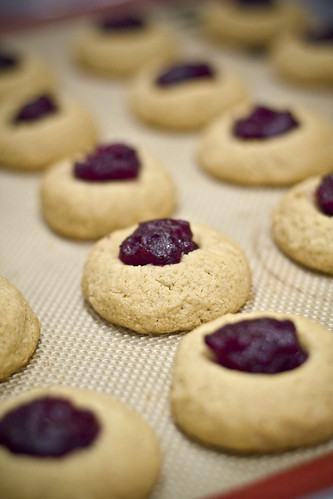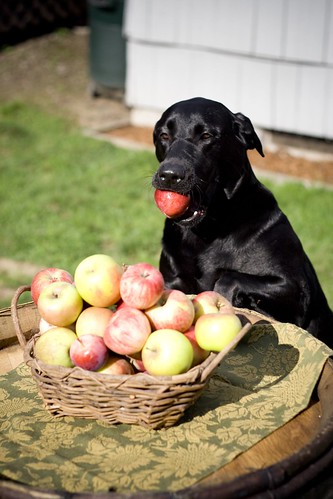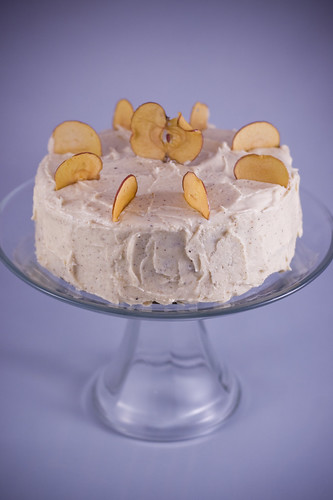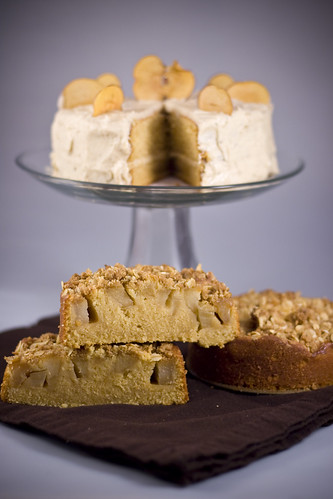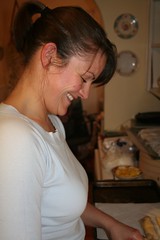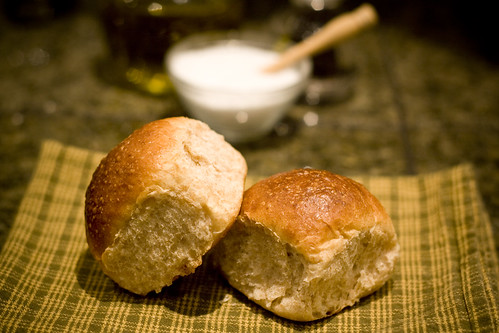
When I think of dinner rolls, I think of a dough enriched with some butter to make the bread tender and some sugar to sweeten it a bit. These rolls made with part white flour and part whole wheat flour, a very mild and light bread- a great dinner roll. This dough also works well for making stuffed buns. You can stuff them with all sorts of things, ham and cheese, or caramelized onions and maybe some roasted butternut squash... anything you could possibly think of! In an upcoming blog I'll come up with an example or two for you. For now, here is the recipe for the rolls, sorry it may be a little late for Christmas dinner, but once all of the excitement has died down give them a try! I am making them tonight for Christmas dinner tomorrow and have made the dough but am letting it rise overnight. Tomorrow I'll shape, proof and bake the rolls fresh for dinner tomorrow. These can easily be done in one day- in about 3 hours or it can be broken up over two days. Or you can make the rolls ahead of time and then freeze them.
Dinner Rolls (makes about 18 rolls)
1 1/2 cups (360 g) water, about 75 degrees
1/3 cup and 4 tsp (30 g) non fat dried milk powder
1 3/4 cup (225 g) whole wheat flour
3 cups (400 g) bread flour
2 1/2 tsp (12 g) salt
2 3/4 tsp (8 g) instant yeast
1/4 cup (60 g) sugar
1/4 cup (60 g) butter, room temperature
Mix the water and milk powder in a bowl. In another bowl mix all the dry ingredients together, stirring to make sure everything is equally distributed. Add the water and butter to the dry ingredients.
To Mix by hand:
Grab the dough and start squeezing the dough through your hand and keep incorporating everything until you no longer see any dry ingredients. As you are grabbing the dough, focus on the spots where there are dry ingredients still visible. After it is all mixed in, let it sit either in a bowl covered or on the counter with the bowl over the dough (to prevent it from getting dried out). Let the dough rest and hydrate for 5 minutes then knead the dough until it's smooth and developed.
To Mix on a mixer: put all the ingredients into a mixer and mix on low speed for 10 minutes.
After the dough is developed put it into a clean greased bowl and let it rise for 45 minutes (or if letting it rise overnight, let it sit out for 30 minutes, then re round the dough and put it into a covered bowl and into the refrigerator. The next day take the dough out, portion, round and let the dough proof.). After 45 minutes, turn the dough onto the counter and gently pat down and fold the four sides in and turn the dough over and let rise once more until the dough has doubled in size (about 30-45 minutes depending on the temperature in the kitchen). Turn the dough out on the counter and either using a scale portion out the dough to 2 oz pieces, or you can just eyeball it and cut them into 18 equal pieces. Pat the dough into a flat disk, and then gather all the edges up, and pinch to make a tight seam. Putting the seam on the counter, cup your hand over the dough and roll in a small circle to tighten the top of the dough and seal the seam. Place them on a greased sheet pan (or on a parchment lined sheet pan)and then cover them with a cloth or some plastic wrap (loosely so the dough has room to rise) and then let them rise until they are double in size. If you want them to be shiny, brush them with egg wash (a mixture of egg and a splash of water well mixed) before baking. Bake at 375 degrees for about 20 minutes or until the rolls are a dark golden brown. After they come out of the oven put them on a cooling rack to cool. Have a wonderful holiday season!

